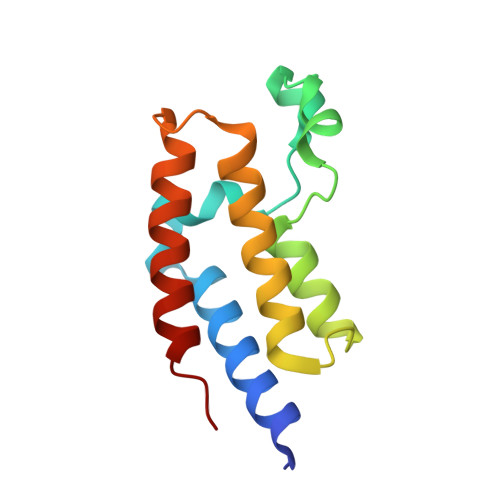Identification of a Series of N -Methylpyridine-2-carboxamides as Potent and Selective Inhibitors of the Second Bromodomain (BD2) of the Bromo and Extra Terminal Domain (BET) Proteins.
Harrison, L.A., Atkinson, S.J., Bassil, A., Chung, C.W., Grandi, P., Gray, J.R.J., Levernier, E., Lewis, A., Lugo, D., Messenger, C., Michon, A.M., Mitchell, D.J., Preston, A., Prinjha, R.K., Rioja, I., Seal, J.T., Taylor, S., Wall, I.D., Watson, R.J., Woolven, J.M., Demont, E.H.(2021) J Med Chem 64: 10742-10771
- PubMed: 34232650
- DOI: https://doi.org/10.1021/acs.jmedchem.0c02155
- Primary Citation of Related Structures:
7NPY, 7NPZ, 7NQ0, 7NQ1, 7NQ2, 7NQ3 - PubMed Abstract:
Domain-specific BET bromodomain ligands represent an attractive target for drug discovery with the potential to unlock the therapeutic benefits of antagonizing these proteins without eliciting the toxicological aspects seen with pan-BET inhibitors. While we have reported several distinct classes of BD2 selective compounds, namely, GSK620, GSK549, and GSK046, only GSK046 shows high aqueous solubility. Herein, we describe the lead optimization of a further class of highly soluble compounds based upon a picolinamide chemotype. Focusing on achieving >1000-fold selectivity for BD2 over BD1 ,while retaining favorable physical chemical properties, compound 36 was identified as being 2000-fold selective for BD2 over BD1 (Brd4 data) with >1 mg/mL solubility in FaSSIF media. 36 represents a valuable new in vivo ready molecule for the exploration of the BD2 phenotype.
Organizational Affiliation:
Epigenetics Discovery Performance Unit, GlaxoSmithKline, Medicines Research Centre, Stevenage, Hertfordshire SG1 2NY, U.K.

















